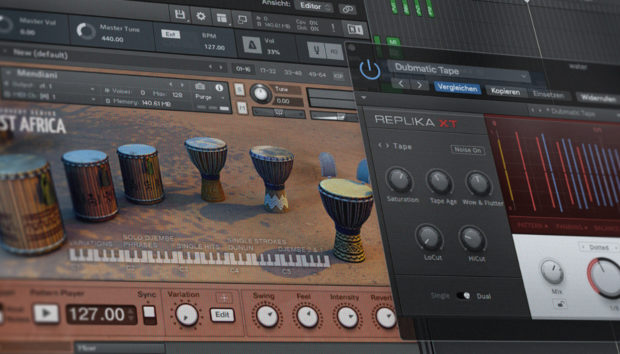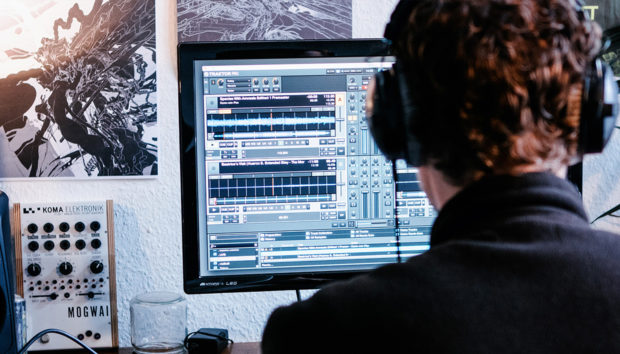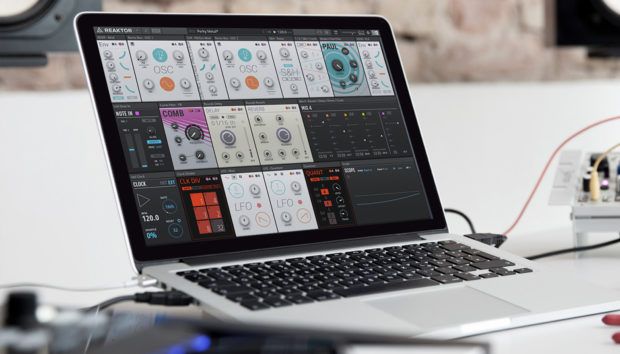Rob Tirea’s new EP Universal Jest is a project he warmly describes as a soundtrack to life’s absurd beauty. Pulling from indie pop, electronic songwriting, and cinematic arrangement, the EP leans heavily into emotional storytelling, and nowhere is that more apparent than in his use of synthesizers.
At the center of his low-end palette is Monark, Native Instruments’ modern recreation of the Minimoog Model D. Tirea uses it for its tone as well as for its restraint. Whether he is anchoring orchestral swells or delivering punch in club-leaning mixes, Monark acts as the player who keeps the whole band glued together without needing the spotlight.
In this interview, Tirea explains how he uses Monark to create contrast, carve space for strings, and inject emotion into the most foundational elements of his music.
For more information about Rob Tirea, please visit: Instagram | Spotify | SoundCloud | Website
Jump to these sections:
- Why Monark works so well for emotional bass
- Techniques for blending synths with strings
- How orchestral thinking shapes his programming
- Automation, filtering, and analog-style expression
- Pro tips for vibrato, filter warmth, and subtle saturation.
It all comes down to getting the most out of a sound and allowing them to actually speak in a mix and not just fill a space, need, or line item. And it’s all covered in the interview, so let’s get into it.
When you’re scoring something cinematic like Universal Jest, what kind of role does Monark usually play in the mix?
It’s usually the thing holding it all together underneath. Kind of like the bass player at the back of the stage who doesn’t need the spotlight, but the whole thing falls apart without them. Monark’s got that solid, slightly eerie tone that fits right into the atmosphere without trying too hard.
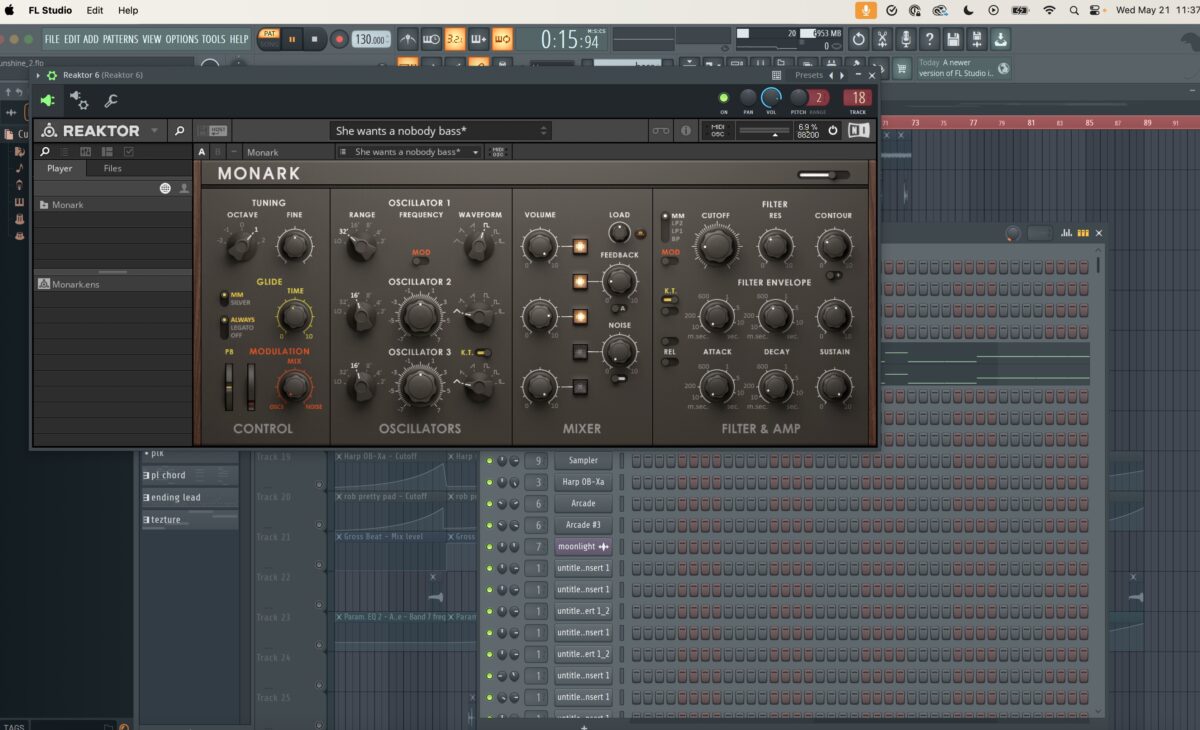
It acts like a subconscious anchor – audiences might not notice it outright, but they’d feel the absence if it weren’t there. I often tweak it to just ride along with the emotional undercurrent, using long filter envelopes or subtle modulation to give it breath. It’s a foundation, but not a static one – it moves just enough to make everything else feel alive.
Pro tip from Rob Tirea: Use Filter Drive for Subtle Warmth. Monark’s filter isn’t just about shaping tone – it adds character. The Filter Feedback and Load controls emulate the original Minimoog’s saturation behavior. You can crank the feedback to add warmth and harmonic grit, especially in bass patches. For more liquid or aggressive tones, push the Emphasis (resonance) just before self-oscillation.
Why stick with a vintage-style monosynth in a world full of high-poly, hybrid power synths?
It’s the best plugin for bass sounds, hands down. It sounds incredibly analog and already sounds fantastic without any processing. Simplicity’s underrated. With Monark, there aren’t a million things going on – you just get straight to the sound. It’s warm, it’s punchy, and you can actually feel it. It’s like an old cassette player: not perfect, but that’s the point.
I also think creative limitation is a huge asset. When you strip away the clutter of endless features, you start paying more attention to performance and tone. That’s where Monark shines because you get into the feel of the patch, the interaction between the oscillator and the filter, the way it reacts to velocity. It brings you closer to the core of the sound.
Pro tip from Rob Tirea: Shape with Envelopes Like an Instrumentalist. Dial in envelopes with intent, like a bowed string or a breathy horn. Use a slow attack + long decay for expressive leads. For plucks or percussive synths, go with short attack and decay, and adjust the Sustain carefully – think of it like controlling a pick or a pluck.
When you’re blending Monark with live strings, how do you make space for both without crowding the mids?
A bit of EQ, a bit of timing. You just make sure they’re not stepping on each other. I usually let Monark sit lower in the mix, then push the strings up and out by panning them pretty hard.

Sometimes I’ll also soften Monark’s attack so it doesn’t compete with the articulation of the strings. And if I need even more space, I’ll use dynamic EQ or multiband sidechain to subtly duck the synth just when the strings swell. It’s all about keeping the relationship fluid so the two parts feel like they’re breathing together, not fighting for attention.
Pro tip from Rob Tirea: Oscillator Drift = Authentic Analog Vibe. Real analog oscillators drift in pitch and phase. Monark lets you simulate that through subtle detuning and phase offset between the three oscillators. Use Osc 2 and Osc 3 slightly detuned from Osc 1 for warmth and stereo width (especially when layered with chorus or reverb). Don’t overdo it – just a few cents can go a long way.
How do you process Monark differently when it’s playing alongside orchestral elements instead of inside a club mix?
In a club mix, you’re pushing it forward and making it loud, maybe a bit nasty. But with an orchestra, it’s more subtle. I dial it back, smooth it out. A bit of saturation, maybe some compression – just enough to give it texture without making a fuss.

I’ll sometimes layer a very light, airy reverb or delay on it too – just to place it in the same acoustic space as the strings or brass. And because orchestral music is so dynamic, I’ll automate the synth’s presence to rise and fall with the arrangement. It becomes more of a conversation than a statement.
Pro tip from Rob Tirea: Modulate Pitch or Filter with Oscillator 3 (LFO-style). Oscillator 3 can act as an LFO by switching it to Low mode – this is perfect for vibrato, filter sweeps, or PWM style effects. Set Osc 3 to Low, then use the Mod Mix knob to blend between pitch and filter modulation. Great for creating organic movement or vocal filter effects.
Any tricks you’ve picked up for making Monark patches bloom or evolve under orchestral transitions?
I love automating all the parameters during build-ups in dance music and using cutoff, resonance, or noise to create tension without needing to use any risers. With basslines, using a chorus send for width is also a fantastic tip. You need to mimic the depth and velocity that the players play with.
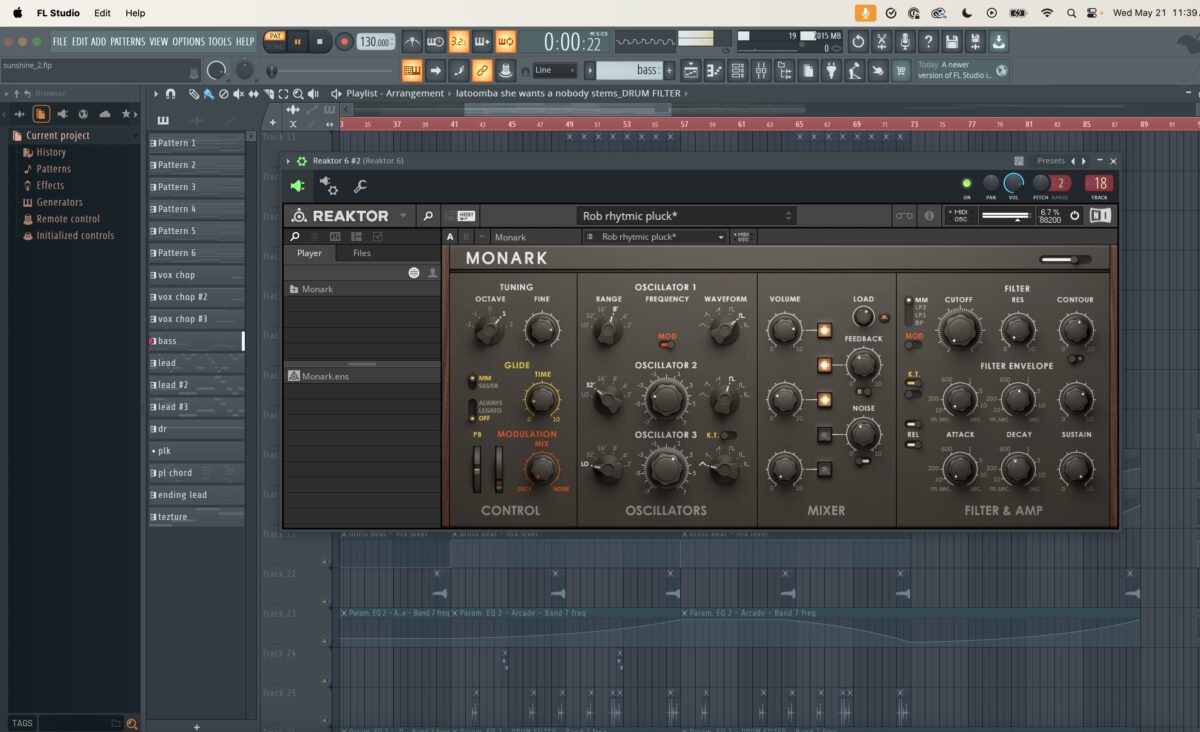
Sometimes I’ll also modulate filter cutoff with a slow LFO or even use velocity to control filter depth so it responds more musically to how it’s sequenced. It helps break that “synth loop” feeling and brings a more organic, expressive curve to the transitions. It’s not just about sound design – it’s about making the synth feel like a performer.
Pro tip from Rob Tirea: Use Velocity + Aftertouch in Your DAW for Performance RealismMonark doesn’t support velocity or aftertouch natively, but you can route them in your DAW to control cutoff, volume, or resonance. Map velocity to filter cutoff and aftertouch to filter resonance or mod amount for expressive playing. Combine with envelope tweaks for full instrument-like behavior.
Are there things you’ve learned from working with orchestral players that now influence how you program or mix synths like Monark?
Definitely.
Working with orchestral players shifts your whole perspective – they don’t just play notes; they tell stories with them. That kind of emotional precision makes you rethink how you approach synths. With something like Monark, I’m not just dialing in a bass patch; I’m thinking about phrasing, like how a cellist leans into a note or how a string section swells as one. So I’ll automate filter sweeps to mimic that bowing motion or add subtle pitch modulation for vibrato. The goal is to make it feel alive – not perfect, but expressive.

It’s also made me more sensitive to dynamics over time.
Orchestral players never sit at one volume for too long, and I’ve started applying that idea even within a single Monark note – tweaking envelopes so there’s micro-movement in every phrase. The result is something that feels like it belongs with acoustic instruments, not just layered on top.
Wrapping it all up
Thanks to Rob Tirea for sharing how Monark fits into his process. What stands out is how he uses it not as a flashy lead or a dominating bass line, but as a subtle, expressive layer that helps tie everything together. It’s a reminder that restraint and nuance often make the most significant impact, especially when you’re blending electronic and acoustic worlds.
Monark gives him the space to stay focused on feel over features. For producers looking to bridge the gap between synths and live instruments, this is a real-world example of how to do it with intention.
